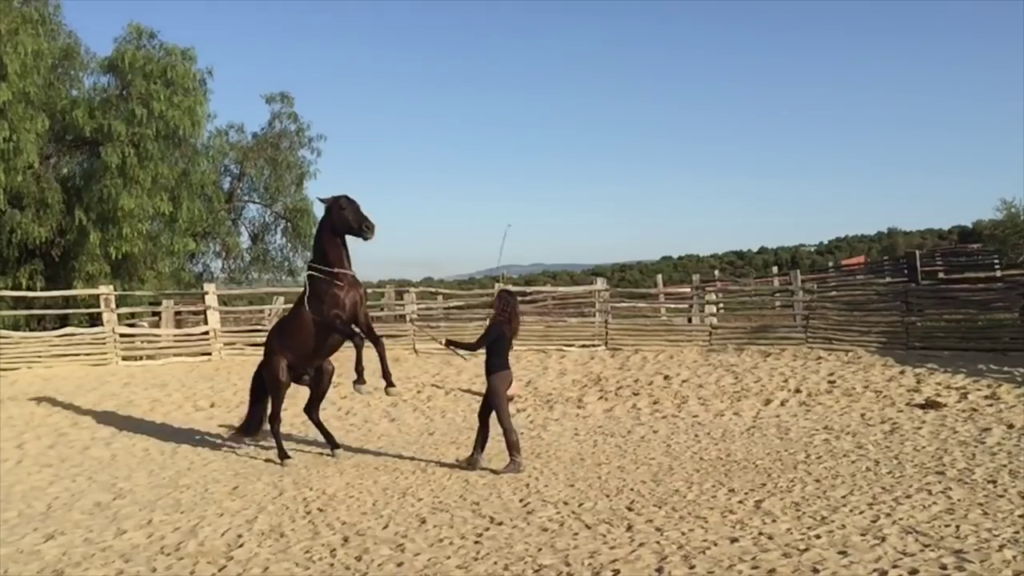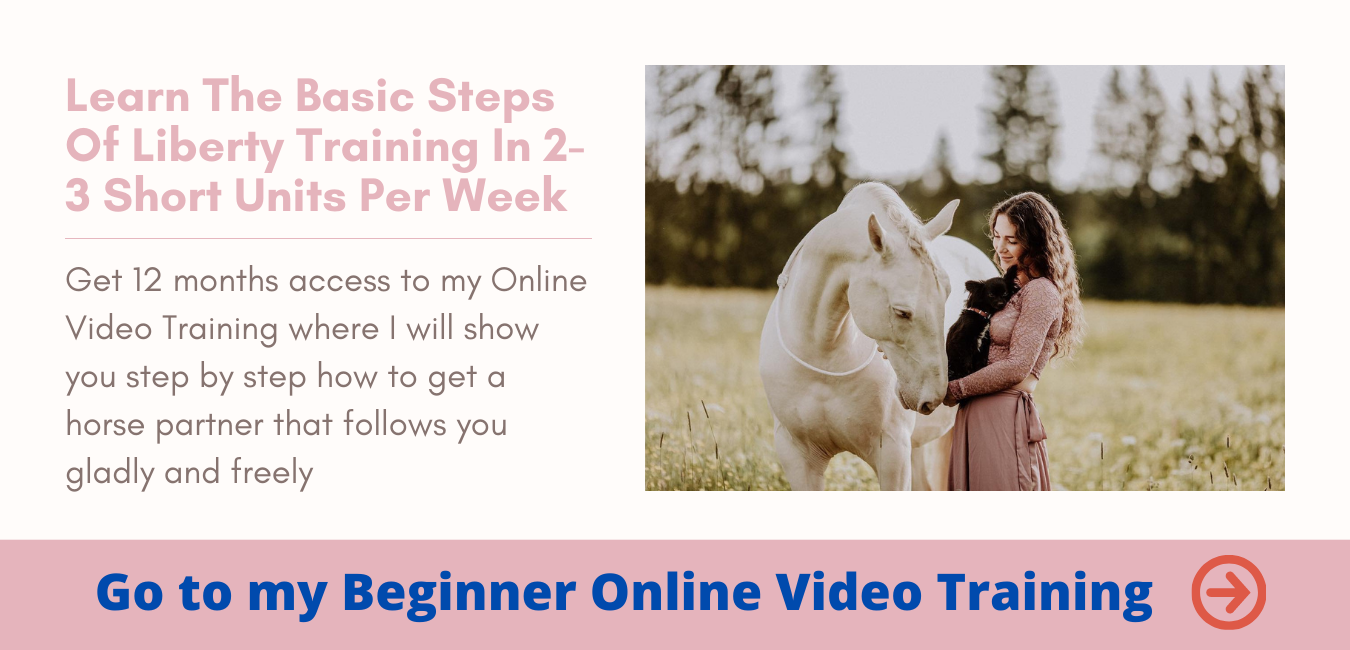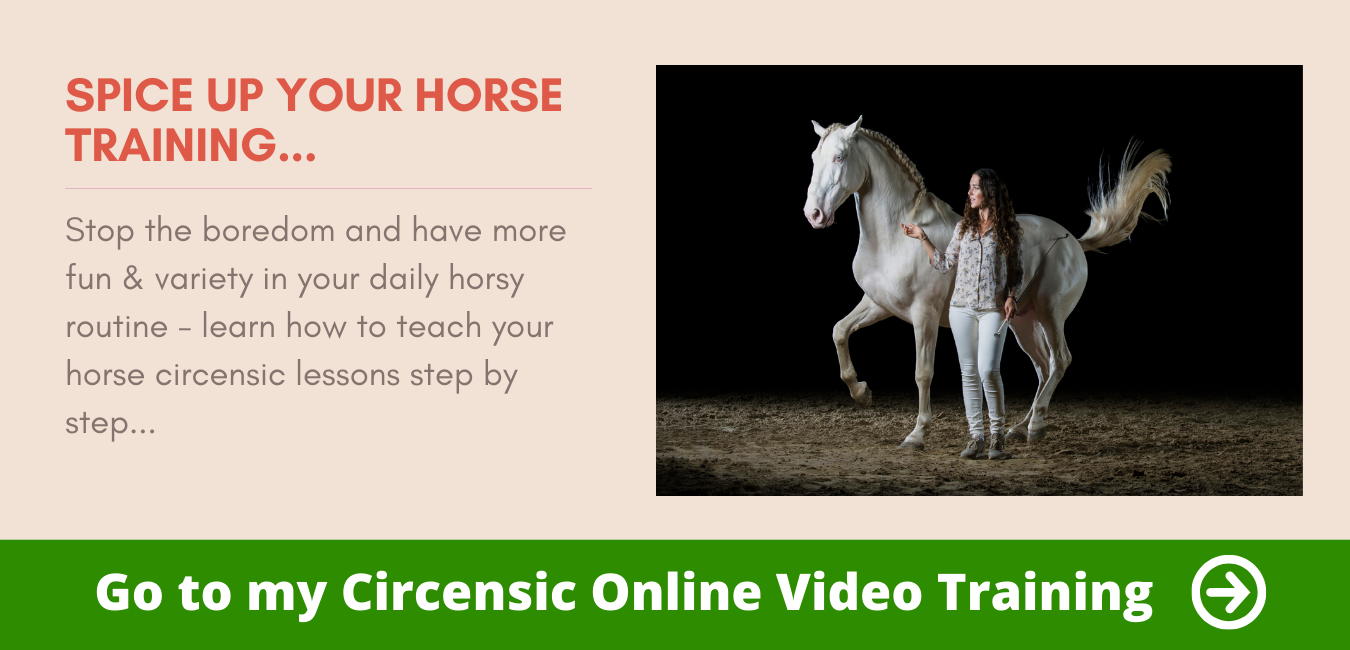Today I would like to talk to you about how I deal with overconfidence in training – and what to keep in mind.
Our horses never mean any harm, but it would of course be nice if we could make progress with our training and if possible not end up in the dirt ?
Overconfidence is rarely good for you!
Therefore, the best and simplest magic word against funny horses is: A lot of exercise.
However, it is not unusual for horses not to move too much on their paddocks – they only start to move when we “push” them.
The most important thing with capricious and bucking horses is to warm them up well beforehand. It is not uncommon for too much exuberance to result in an overstretched tendon or even a crack during a “cold start”.
A minimum of 10 minutes step to warm up is therefore mandatory!
If it is still fresh in the early morning, you are welcome to allow a little more time – depending on whether your horse is coming out of the box or out of the open stable, where it is always moving anyway.
But never underestimate the benefits of a reasonable warm-up period! Your horse will thank you for it.
But what does this mean for the liberty work now?
Especially when our horses are full of energy and joy of life, they often have trouble concentrating. They are quickly distracted, drift away or come much too close to us.
But since my horses should never learn that they can run away during free work to avoid training, I start EVERY training with halter and rope. This gives me the necessary security that my horse doesn’t end the training right at the beginning – and that we make back rather than progress.
In straightforward terms:
Especially when my horses are funny and high-spirited, there is no “leap of faith”. They can get rid of energy first!
For this purpose, after an appropriate warm-up phase, I either let them buck out first (really “free” – and not in liberty work!) or I direct their energy directly to first exercises with me.
To be on the safe side, I always use the rope, because my training should bring me forward and not throw me back.
If my horse is then unfocused, wanders off and storms away for a short time, I can not only regain his attention through my body language with the help of the rope, but he also learns that I am consistent in my requests – and I keep asking them until my horse fulfills them. At least if my horse already knows the task ?
Don’t get me wrong: It’s not the end of the world when your horse runs away from you in free work.
But I do not provoke the running away. Simply because I know how quickly many horses get the hang of it and run away as soon as it gets a bit more strenuous or difficult.
In the end, you know your horse best. Because every horse is different! Where some horses need to be directly focused in order to “get down” as quickly as possible, others need to let their energy out for a few minutes before they can concentrate on training.
If you don’t know which category your horse belongs to, I can only recommend you to try both variations. Often you can tell by the expression on your face what kind of day it is – and how your horse is doing today.
Riding – but how?
As soon as you leave the “safe ground”, we as riders often don’t deal with the outbursts of joy of our horses in the same relaxed way. In many cases, it is recommended to actually give the horse the opportunity to get rid of excess energy before riding (without rider).
Of course, you should not forget to warm up beforehand either – but a few joyful outbursts are often more beautiful to look at from the ground than from above ?
If the sun regularly comes out from behind the clouds, many of us are drawn back into the terrain. Again, I can only recommend that if in doubt, we should unmount the horse or let it run free. This often saves some surprises!
Of course, unharnessing does not replace a well-founded calmness training.
Experience shows that if you don’t go out into the countryside regularly, many horses find more things scary.
The only thing that helps: Practice, practice and practice!
Routine and training are everything here!
Don’t let yourself be unsettled if your horse can’t do something right away, which might have worked well before – horses don’t want to deliberately make life difficult for us.
They just think differently than we do ?. For example, horses notice small changes much faster – and they often perceive these changes as a potential danger. Even if missing logs have not yet eaten a horse ?
Focus!
As so often in horse training, the right timing is probably the most important thing here! And to direct excess energy consistently and calmly into a regulated path. Don’t let your horse’s behavior unsettle you – you are the rock in the surf. ?
[su_youtube url=”https://youtu.be/bsjDUdruv58″]
In this sense, have fun practicing!
All the best,
Your Kenzie




